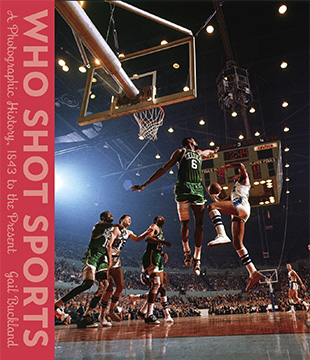
Who Shot Sports: A Photographic History, 1845 to the Present.
by Gail Buckland Alfred A. Knopf, 2016
Here, in more than 280 spectacular images, are great action photographs; portraits of athletes, famous and unknown; the fans who adore them; athletes off the field and behind the scenes; the daily relentless effort of training and achieving physical perfection.
Buckland writes that sports photographers have always been central to the technical advancement of photography, that they have designed or demanded longer lenses, faster shutters, motor drives, underwater casings, remote controls, allowing us to see what we could never see before - and hold on to--with the naked eye.
Sports are beauty in motion with a powerful competitive edge. The best sports photographers are also artists, carefully crafting their pictures. Yet, their contribution to cultural, art and photographic history is rarely noted. To see human greatness is both to recognize our own personal limitations and delight in what are fellow human beings can physically and mentally achieve. To play and to watch sports is to be fully in the moment. Nothing freezes the moment like a still photograph. When the athletes on the court and on the field are taking their shots, the photographers on the sidelines are taking theirs.
See PRESS for reviews.

Reality Recorded: Early Documentary Photography
Greenwich, Ct: New York Graphic Society, 1974.
The story of how 19th century photographers, using the first cameras and earliest processes, documented their world—from family life to famines, from industrialization to the destruction of war.
. . . . . . . . . . . . . . . . . . . . . . . . . . . . . . . . . . . . . . . . . . .
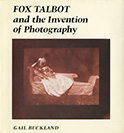
Fox Talbot and the Invention of Photography.
Boston: David R. Godine, 1980.
“…Gail Buckland… writes with exemplary clarity and precision and with a keen sense, too, of the human drama that attended every aspect of its [photography’s] development. The book she has given us is at once learned, readable and where appropriate—especially in the penetrating discussion of Talbot’s own first photographs—it achieves an eloquence rarely to be found in a work containing so much original research….To both the history of photography and the literature of modern culture this book makes an important contribution....” —Hilton Kramer, New York Times Book Review, Aug. 17, 1980.
. . . . . . . . . . . . . . . . . . . . . . . . . . . . . . . . . . . . . . . . . . .
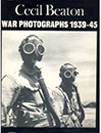
Cecil Beaton War Photographs 1939-1945
London: Jane’s and Imperial War Museum,1981.
Although Beaton did not go to the front, his war photographs illuminate the breadth of the war and the men and women who fought it on the home front and abroad.
. . . . . . . . . . . . . . . . . . . . . . . . . . . . . . . . . . . . . . . . . . .
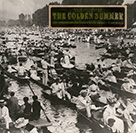
The Golden Summer: The Photographs of Horace W. Nicholls
London: Pavilion, 1989.
Cecil Beaton used these photographs to do the costumes and sets for My Fair Lady.
“While these pictures [of Ascot, Derby, Henley, Cowes, etc] are highly evocative of Britain's ‘golden summer,’ the biography in the final third of the book is equally engaging…Buckland's writing, as always, is entertaining ….” —Ann Copeland, Library Journal.
. . . . . . . . . . . . . . . . . . . . . . . . . . . . . . . . . . . . . . . . . . .
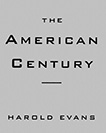
The American Century
by Harold Evans with Gail Buckland and Kevin Baker. New York: Alfred A. Knopf, 1998.
“The pictures...are the best collected in any of the books on the century. Some are funny, some harrowing; and their captions can sizzle...” —Garry Wills, The New York Review of Books
“The brisk text breathes new life into even the best-remembered episodes, and the choice of historic photographs is superb...”—Geoffrey C. Ward, Washington Post Book World
“A wide-ranging, politically detached view of the shaping events of the century. It is excellent prose, with wonderful pictures….” —John Kenneth Galbraith
. . . . . . . . . . . . . . . . . . . . . . . . . . . . . . . . . . . . . . . . . . .
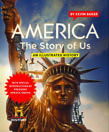
America: The Story of Us
by Kevin Baker. Art and Photography edited by Professor Gail Buckland. New York: History Channel, 2010.
This is the companion volume to the twelve-part History Channel series which tells the saga of America’s transformation from the land that awaited the earliest settlers to the complex democracy that elected Barak Obama. Bringing this incredible story visually alive was the job of Professor Buckland.
. . . . . . . . . . . . . . . . . . . . . . . . . . . . . . . . . . . . . . . . . . .
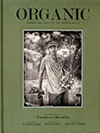
Organic: Farmers and Chefs of the Hudson Valley
by Francesco Mastalia, introduction by Gail Buckland. New York: PowerHouse, 2014.
The over 100 portraits of the farmers and chefs of the Hudson Valley were photographed using the wet-plate collodion process, a technique developed in the 1850s when the art of photography was in its infancy. The amber toned images remind us of a time when the cultivation of land was a manual process that linked the farmer directly to the soil. In narrating their own stories, the farmers and chefs share their philosophy about what it means to grow and live organically and sustainably.
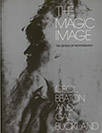
The Magic Image: The Genius of Photography from 1839 to the Present Day
with Cecil Beaton: Boston: Little Brown & Co, 1975.
Considered one of the classic books on the history of photography.
“…remarkable book…major work of research, scholarship and judgment. It will stand for a long time.” —Irving Penn
. . . . . . . . . . . . . . . . . . . . . . . . . . . . . . . . . . . . . . . . . . .
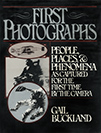
First Photographs: People, Places, & Phenomena as Captured for the First Time
by the Camera. New York: Macmillan, 1980.
An idiosyncratic collection of mostly unfamiliar photographs pinpointing when things were recorded by the camera for the first time.
. . . . . . . . . . . . . . . . . . . . . . . . . . . . . . . . . . . . . . . . . . .
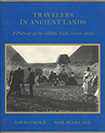
Travelers in Ancient Lands: A Portrait of the Middle East, 1839-1919
with Louis Vaczek. Boston: New York Graphic Society, 1981.
A portrait in early photographs and text of the Middle East from the time of the invention of photography to the end of the Ottoman Empire. Described and pictured are magnificent ruins, diverse peoples and holy places.
. . . . . . . . . . . . . . . . . . . . . . . . . . . . . . . . . . . . . . . . . . .
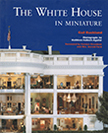
The White House in Miniature
New York: W.W. Norton, 1994.
A history of the White House told room by room, illustrated with photographs of the miniature White House made by John and Jan Zweifel.
. . . . . . . . . . . . . . . . . . . . . . . . . . . . . . . . . . . . . . . . . . .
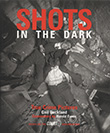
Shots in the Dark: True Crime Pictures
New York: A Bulfinch Press Book, 2001.
Based on the Court TV documentary, a riveting collection of history’s most starling crime photographs and the stories behind them.
. . . . . . . . . . . . . . . . . . . . . . . . . . . . . . . . . . . . . . . . . . .
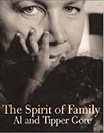
The Spirit of Family
by Al and Tipper Gore with Gail Buckland and Katy Homans. New York: Henry Holt, 2002.
The photographs, taken in the 1980s and 1990s by leading photographers, show the remarkable diversity and emotional richness of the changing face of American families.
. . . . . . . . . . . . . . . . . . . . . . . . . . . . . . . . . . . . . . . . . . .
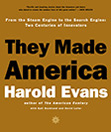
They Made America: From the Steam Engine to the Search Engine: Two Centuries of Innovators
with Gail Buckland and David Lefer. New York: Little Brown and Company, 2004.
Companion to the WGBH public television series of the same name.
“Terrific and inspiring stories about the dreamers and doers who dared to create the modern face of this great nation.”—Jack Welch, former C.E.O., General Electric
. . . . . . . . . . . . . . . . . . . . . . . . . . . . . . . . . . . . . . . . . . .
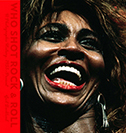
Who Shot Rock and Roll: A Photographic History, 1955 to the Present
New York: Alfred A. Knopf, 2009
“I loved this book…whatever Gail Buckland writes, I want to read.” —Dwight Garner, The New York Times
“The curator Gail Buckland has put together a big, vivid survey of the photographers who documented the rock scene that is as intelligent as it is entertaining... It’s her eye for great photographs that makes this much more than a stroll through the Rock and Roll Hall of Fame….” —The New Yorker
